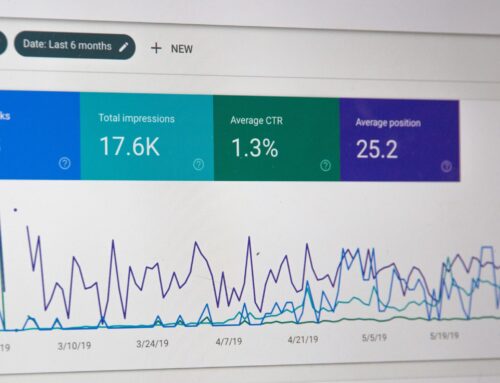
Imagine you need to teach aspiring electricians how to wire a connection. How can you tell they’ve mastered this skill? Would you ask multiple choice questions about the history of electricity? You could. But these types of knowledge-based questions wouldn’t really measure the learner’s skill at wiring.
Skill-based assessments are an essential part of measuring the competency of the learner, and whether they have the skills needed to do the job required of them. However, since they can be tricker than knowledge-based ones, creating effective assessments that measure skills might look like a daunting task. In this blog, we will discuss some tips and tricks to create skill-based assessments that effectively measure the competency of your learners.
Where to begin
First things first, your assessment needs to align with the learning objectives of the training program. If you find yourself struggling to define your objective, then start simply. Try to define what the learner should be able to do by the end of the training program. From there, state that objective as something observable that can be assessed.
And going in tandem with your objectives, you also have to define the skills that need to be assessed. These could be technical, cognitive, or interpersonal, depending on the job or course. Let’s go back to the example we used about a training program for electricians. If you built a training module that detailed how to wire a circuit, you’d want to ensure your learners knew how to actually perform that task. Thus, when identifying the various learning objectives, you might want to separate the knowledge and the skills-based objectives.
Designing the right questions
When designing the assessment questions, it’s helpful to use Bloom’s Taxonomy. This is to say that you should design questions that measure the learners’ cognitive skills at six levels:
- Remembering: This level involves the recall of basic information, such as facts, definitions, and concepts.
- Understanding: Here, learners demonstrate comprehension of the material by interpreting, explaining, and summarizing it.
- Applying: Learners apply their understanding of the material to solve problems, make predictions, or complete tasks.
- Analyzing: This level involves breaking down information into its component parts and examining how they relate to each other.
- Evaluating: At this level, learners make judgments about the quality or value of information, using criteria or standards to support their judgments.
- Creating: Finally, this involves the generation of new ideas or products based on previously learned information.
A skill may include knowledge areas. For example, an electrician may need to remember how to identify the positive, negative, and ground wires. But an effective skills-based assessment needs to measure the learner’s ability to perform an action.
To make the assessment more effective, it’s a good idea to use authentic assessment tasks. When teaching a skill, you need to teach exactly what the skill or task is. This requires the learner to apply their skills in a practical context. Interactive assessments are key to measuring the learners’ ability to apply their skills in this manner. And you can design this interactivity in a variety of ways.
 Think back to our example where you built a training module with instructions on how to wire a circuit. A great assessment here might be a simulation where learners are tasked with applying the information they were just given to complete a task. Additionally, you could assess the learner’s knowledge around that task, using a matching activity where learners need to place certain tasks in the correct order, or a sorting activity where they identify which tools they need for which jobs. But a skills-assessment needs to measure the learner’s ability to complete the tasks. This could be done using simulation, a monitored checklist, rubrics, etc. Just remember to keep the learning objectives at the forefront and design assessments that measure those skills.
Think back to our example where you built a training module with instructions on how to wire a circuit. A great assessment here might be a simulation where learners are tasked with applying the information they were just given to complete a task. Additionally, you could assess the learner’s knowledge around that task, using a matching activity where learners need to place certain tasks in the correct order, or a sorting activity where they identify which tools they need for which jobs. But a skills-assessment needs to measure the learner’s ability to complete the tasks. This could be done using simulation, a monitored checklist, rubrics, etc. Just remember to keep the learning objectives at the forefront and design assessments that measure those skills.
Assessment feedback
After, or during the assessment, make sure to provide feedback to the learners. This will help reinforce their learning and identify areas for improvement. The feedback should be specific and provide suggestions for what they can do to perform better. Also, skills require practice, so make sure your strategy includes allowing learners to repeat the assessment, building their mastery.
Lastly, make sure that your assessment is valid and reliable. This means that it measures what it’s supposed to measure and produces consistent results. How can you measure this? If your learners are consistently passing your skills-based assessment, but feedback from the job site is that they still cannot wire a circuit, this is a good indication that you need to revisit your training and your assessment. You can also use technology to make the process more efficient, such as administering the assessment online and using data analytics to analyze the results.
Takeaways
Creating skills-based assessments can seem daunting. But as we’ve shown, the process isn’t too different from creating other assessments. As with anything in eLearning, the learning objectives will dictate what you do here. By following solid objectives and heeding a few tips to creating skills-based questions, like Bloom’s taxonomy, then the process becomes more straightforward.
If you need additional help creating training that sticks, then contact us for a free discovery call. And if you’re in the market for an LMS to host your training content, our Knowledge Direct platform can offer you just that, with our integrated testing and assessment engine. Contact us for a free trial.
For more industry-focused articles like this, subscribe to our free monthly newsletter, Smarter…Faster!




